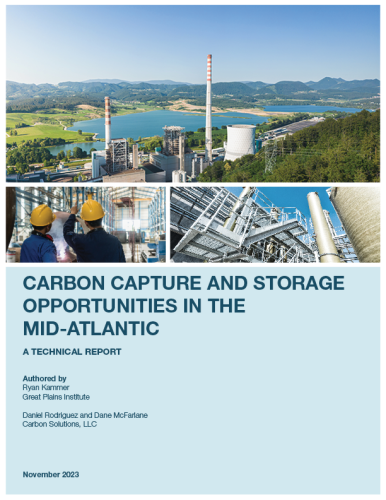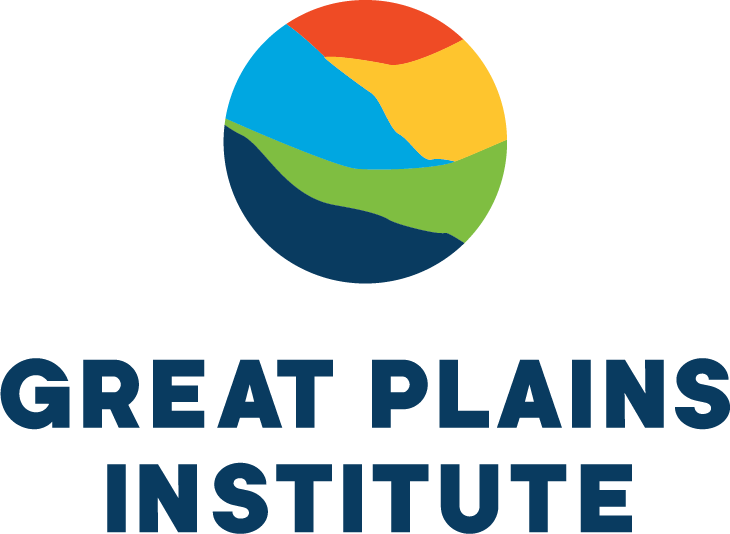Preparing the Policy, Industry, Labor, and Environmental Landscape
States are Ready for Carbon CaptureCarbon Capture and Storage Opportunities in the Mid-Atlantic
 This report builds on the results from GPI’s Transport Infrastructure for Carbon Capture and Storage to identify regional deployment opportunities in the Mid-Atlantic region of the United States. The analysis identified capture opportunities that could be deployed in the near term as well as into the midcentury and evaluates the regional transport infrastructure and saline geologic storage needed to decarbonize the energy and industrial sectors in the Mid-Atlantic.
This report builds on the results from GPI’s Transport Infrastructure for Carbon Capture and Storage to identify regional deployment opportunities in the Mid-Atlantic region of the United States. The analysis identified capture opportunities that could be deployed in the near term as well as into the midcentury and evaluates the regional transport infrastructure and saline geologic storage needed to decarbonize the energy and industrial sectors in the Mid-Atlantic.
A Vision for Economy-wide Carbon Management
The new carbon economy is underway. We aim to help states and regions be carbon capture ready in order to realize the potential to transform economies and ensure a sustainable environment for future generations.
Carbon capture represents a singular opportunity for the United States to capitalize on the evolving low-carbon economy with benefits to jobs, energy security, and the environment across the region. Policymakers, industry, labor, and NGOs are working throughout the country to ready their regions for this technology that will drastically reduce emissions at coal, gas, cement, ethanol, and other industrial facilities. The captured carbon can then be transported where it can be put to good use in creating products or where it can be permanently and safely stored underground.
Each state has its own unique geography, economy, resources, facilities, and policy landscape and this site is a guide to the current state of play in your region. You’ll find information on facilities with the most potential for carbon capture, the state and federal policies in place or under consideration, and resources, data, and analysis to help inform policy and decision-making.
State-Specific Resources and Analysis
Many regions in the US are rich with potential when it comes to industry, geologic storage, and transport infrastructure. Explore state-specific resources, including legislative, capture, and storage potential within states, as well as analyses identifying facilities that are economically feasible candidates for capture and future transport networks.
Current, Emerging, and Potential Policies
Momentum is building for carbon capture as evidenced by bipartisan policies at the state and federal levels.
Go to our Resources page for the latest on current and pending legislation in states, a checklist to help you build a policy based on your specific state’s needs, issue briefs on legislative topics, and more on what policies are needed to fully realize the potential of carbon capture in the US.

Contact Us
For more information on our carbon management work and how you can join the growing effort to capitalize on this critical technology, please contact the Great Plains Institute’s Emma Thomley at [email protected].

About the Great Plains Institue
A nonpartisan, nonprofit organization, the Great Plains Institute (GPI) is transforming the energy system to benefit the economy and environment. Working across the US, GPI combines a unique consensus-building approach, expert knowledge, research and analysis, and local action to find and implement lasting solutions. Our work strengthens communities and provides greater economic opportunity through creation of higher paying jobs, expansion of the nation’s industrial base, and greater domestic energy independence while eliminating carbon emissions. Find out more at betterenergy.org.


